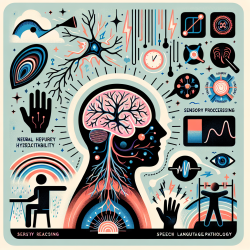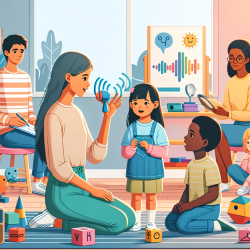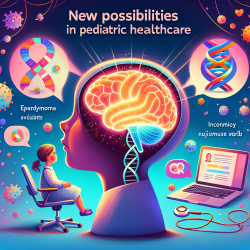Introduction
Recent research has delved into the complexities of autism spectrum disorders (ASD), highlighting neural hyperexcitability as a significant characteristic. The study titled "Neural Hyperexcitability in Autism Spectrum Disorders" provides a comprehensive review of this phenomenon, offering insights into how it affects sensory processing and behavior in individuals with ASD. This blog aims to translate these findings into actionable insights for practitioners working with children on the autism spectrum.
Understanding Neural Hyperexcitability
Neural hyperexcitability in ASD is characterized by an imbalance between excitatory and inhibitory neural processes. This imbalance often results in sensory processing abnormalities, which are common in individuals with ASD. The research highlights several key points:
- Genetic and Epigenetic Factors: Alterations in the GABA and glutamate systems are prevalent in individuals with ASD, leading to increased cortical excitability.
- Sensory Processing: Elevated excitability affects sensory systems, resulting in either hypersensitivity or hyposensitivity to sensory stimuli.
- Neural Synchronization: ASD is associated with reduced neural synchronization, impacting communication within brain networks.
Implications for Practitioners
Understanding these neural mechanisms can significantly enhance the approach of practitioners working with children with ASD. Here are some strategies to consider:
- Sensory Assessments: Regular sensory assessments can help identify changes in sensory processing and guide intervention strategies.
- Individualized Therapy Plans: Given the variability in neural excitability among individuals with ASD, personalized therapy plans that consider sensory sensitivities can be more effective.
- Incorporating Technology: Utilizing tools such as EEG can help monitor neural synchronization and guide therapeutic interventions.
Encouraging Further Research
While the study provides valuable insights, it also opens the door for further research. Practitioners are encouraged to engage with ongoing studies and contribute to the growing body of knowledge. Collaboration with researchers can lead to the development of novel therapeutic strategies and improve outcomes for children with ASD.
Conclusion
Neural hyperexcitability presents both challenges and opportunities in understanding and treating ASD. By leveraging research findings, practitioners can enhance their therapeutic approaches, leading to better outcomes for children. For a deeper dive into the research, I encourage you to read the original paper, Neural Hyperexcitability in Autism Spectrum Disorders.










